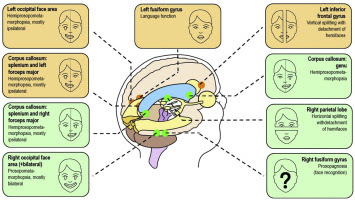Understanding Prosopometamorphopsia: Facial Distortions and Visual Hallucinations
Prosopometamorphopsia is a rare visual disorder that affects how individuals perceive faces. In this article, we delve into the fascinating world of prosopometamorphopsia, exploring its symptoms, causes, and potential treatments. Let’s uncover the mysteries behind this condition and shed light on the perceptual face distortions experienced by those affected.
Facial Distortions: Unmasking the Altered Perception
At the heart of prosopometamorphopsia lies the phenomenon of facial distortions. Imagine looking at a familiar face—perhaps that of a loved one or a friend—and seeing it morph into something entirely different. Features droop, swell, and shift position, creating an unsettling visual experience. These distortions are not mere illusions; they are vivid and persistent, affecting the way individuals interact with the world around them.
Visual Hallucinations: When Faces Become Unrecognizable
Prosopometamorphopsia introduces a surreal twist to the ordinary act of perceiving faces. Those affected report visual hallucinations that transform familiar features into bizarre and sometimes grotesque forms. Eyes bulge, noses elongate, and mouths contort. It’s as if reality itself has taken on a distorted lens, emphasizing certain facial elements while diminishing others. The resulting visual landscape is both fascinating and disconcerting.
Perceptual Face Distortions: A Brain’s Curious Interpretation
To understand prosopometamorphopsia, we must delve into the brain’s intricate workings. Abnormalities in brain regions such as the temporal, occipital, parietal, and frontal lobes contribute to the perceptual face distortions experienced by individuals with this condition. Researchers continue to explore the neural pathways involved, seeking clues that may lead to effective treatments or interventions.
PMO Disorder: Decoding the Abbreviation
When discussing prosopometamorphopsia, you may encounter the abbreviation “PMO.” PMO stands for Prosopometamorphopsia, encapsulating the essence of this visual anomaly. While the term itself may not roll off the tongue, it serves as a succinct reference for researchers, clinicians, and those seeking information about this intriguing disorder.
Demonic Facial Appearance: Unmasking the Unusual
For some, the distorted faces perceived in prosopometamorphopsia evoke a sense of eeriness. Features take on a demonic quality—eyes too large, teeth too prominent, and expressions unsettling. It’s as if the faces belong to a different realm, existing somewhere between reality and nightmare. The juxtaposition of the familiar and the uncanny makes prosopometamorphopsia a captivating subject for study and artistic interpretation.
Remember, understanding prosopometamorphopsia goes beyond the surface—it delves into the very essence of perception and cognition. As we continue to unravel its complexities, we gain insights into the intricate workings of the human mind and the delicate balance between reality and illusion.





